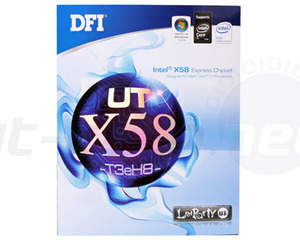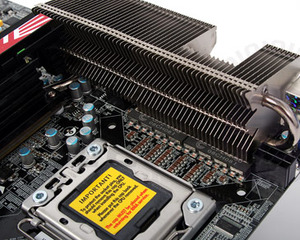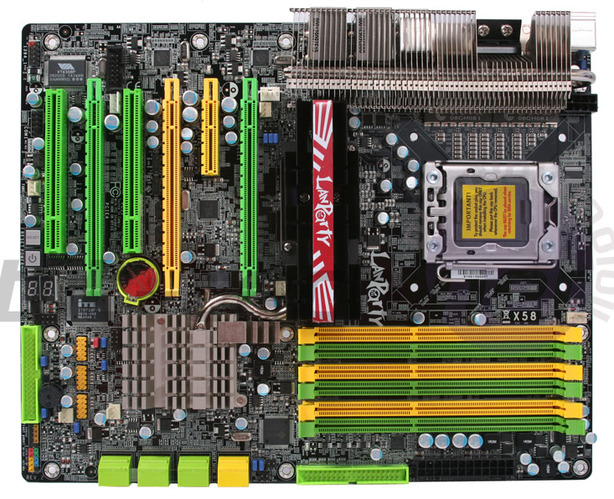
DFI LANParty UT X58 T3eH8
Availability: December (or "when the BIOS is ready").We've seen Asus, MSI, Gigabyte and even ECS, and even though Core i7 is released today we've got the next latest and greatest from a firm forum favourite (say that five times fast) - DFI.
I warn you now, you might want to keep your "OMFGWTFBBQSAUCE" hat to hand if you're a DFI fanboy, and not just because it has those three letters stamped on the PCB.
First off, the box: it's pretty damn super sized is what it is, but that's mostly to package the motherboard safely and keep it from damage. Actually the MSI and Asus boxes are pretty similar to this, since they also have some meaty heatsinks like the DFI features. You may be curious about the name, and quite honestly we are too - the T3eH8 correlates to the DDR3 (T3) with eH8 which refers to the eight phase "server grade" digital PWMs.
DFI claims these are Volterra PWMs that sound like they were designed Vulcans for the new Star Trek movie, although DFI cuttingly remarks against other companies in its press release: While multi-phase PWM is being pursued blindly in the market, LANParty care more about energy efficiency and current stability of each phase. With the Volterra server PWM, Full digital MOSFET & multi-layer ceramic capacitors, LANParty UT X58-T2eH8 can perform even stable in both standard mode and overclocking mode. It also says [LANParty] Volterra PWM solutions as the standard outfit with cost ignorance, which we hope means they are chosen for performance rather than cost efficiency, rather than DFI deciding to sack its accounting department.
EVGA's latest X58 also features an eight phase digital PWM system, but whether it's using the "Volterra" standard, or even if this makes a difference has yet to be seen.
We've yet to see whether this is all that's needed though - does eight phase handling memory controller, CPU cores and CPU uncore area really equate to better performance alone? The memory DIMM slots and northbridge appear to just have a couple of standard phases each though - that's less than MSI and Asus - so will that make a difference for those looking in all area's for extreme performance. We've already seen that varying the QPI frequency doesn't make much difference, and even increasing the memory frequency has a marginal effect because it has oodles to begin with, but that won't stop extreme overclockers from trying to reach new goals for the sake of it.
In terms of the general design, DFI knows how to colour co-ordinate and keeps the same great looks as always. We'd have preferred a plain aluminium northbridge heatsink as well but the large fin array over the rear I/O and southbridge are missing black fancy metal covers from other preliminary pictures we've seen from DFI, so this will mean it should look a little more together should they make the shop shelves.
DFI has gone for "just" a six peripheral slots - concentrating on the two main PCI-Express 2.0 x16 slots in green being almost as far apart as possible, although if you do want three cards the central one does leave enough of a gap either side to accommodate. The only other PCI-Express slot is an x4, but it's annoying placed right under the top x16 slot making it quite useless, and since everything else possibly available is PCI, appropriate peripheral card choice is of utmost importance.

MSI MPG Velox 100R Chassis Review
October 14 2021 | 15:04











Want to comment? Please log in.